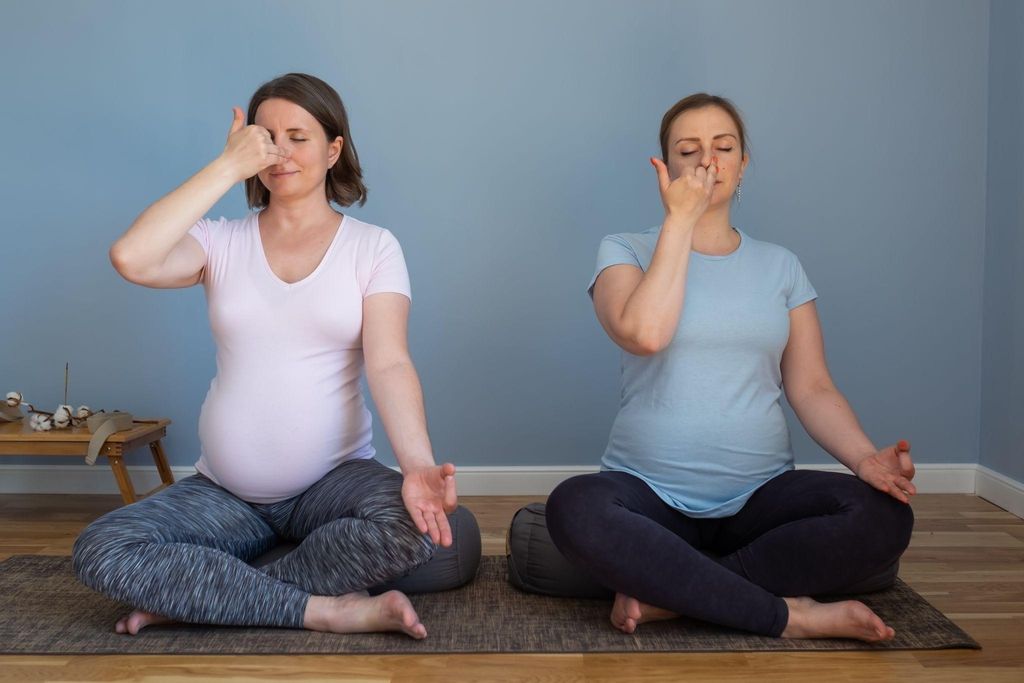Introduction: The Power and Limits of Antenatal Breathing
Antenatal breathing is a valuable tool for managing stress, staying calm during labour, and enhancing overall well-being during pregnancy. However, while breathing techniques are incredibly helpful, they are not a standalone solution for a healthy pregnancy or an anxiety-free birth experience. Preparing your body and mind for delivery requires a holistic approach, including proper nutrition, exercise, adequate rest, antenatal care, and, when needed, counselling or medication.
This article explores how antenatal breathing supports physical and emotional health, the importance of addressing mental health concerns like anxiety and birth trauma, and the steps you can take to prepare comprehensively for delivery.
Understanding the Role of Antenatal Breathing
What Is Antenatal Breathing?
Antenatal breathing involves deliberate, controlled breathing techniques that can:
Reduce stress and anxiety.
Improve oxygen flow to you and your baby.
Help manage pain during labour.
From deep belly breathing to methods like hypnobirthing and Lamaze, antenatal breathing techniques are a cornerstone of pregnancy care.
Why It Matters
Regular practice of antenatal breathing can:
Lower cortisol levels, reducing stress and promoting relaxation.
Enhance focus during labour, allowing you to stay in control of the birthing process.
Foster a connection between your mind and body, creating a sense of empowerment.
Source: Harvard Health
The Link Between Stress, Anxiety, and Birth Trauma
The Impact of Stress During Pregnancy
Excessive stress during pregnancy can have far-reaching effects on both mother and baby. High stress levels are associated with:
Increased risk of preterm birth and low birth weight.
Sleep disturbances, fatigue, and physical tension.
Elevated risk of developing postnatal anxiety or depression.
Source: NHS
Recognising Birth Trauma and Anxiety
Birth trauma and anxiety can occur for various reasons, including:
Difficult labour or delivery.
A lack of emotional or medical support during birth.
Unrealistic expectations of childbirth.
Symptoms may include flashbacks, fear of future pregnancies, or difficulty bonding with your baby. If you experience any of these, seeking help is crucial.
The Limits of Breathing Techniques
While antenatal breathing can provide significant relief, it’s essential to understand its limitations. Breathing alone cannot:
Replace the need for proper nutrition, including antenatal vitamins.
Compensate for insufficient rest, lack of exercise, or harmful habits like smoking or excessive caffeine consumption.
Address severe anxiety or mental health concerns without professional support.
A Holistic Approach to Pregnancy Health
Antenatal breathing should be part of a comprehensive prenatal care plan that includes:
Eating a balanced diet rich in fruits, vegetables, whole grains, and lean protein.
Taking prenatal supplements as recommended by your doctor.
Engaging in regular physical activity, such as antenatal yoga or walking.
Avoiding smoking, alcohol, and limiting caffeine.
Tip: Discuss any physical or mental health concerns openly with your midwife or doctor during antenatal appointments.
Source: American Pregnancy Association
Antenatal Breathing Techniques to Practice
1. Deep Belly Breathing
This foundational technique is perfect for relaxation and stress reduction.
How to Do It
Sit comfortably or lie on your side.
Place one hand on your belly and the other on your chest.
Inhale deeply through your nose, allowing your belly to rise.
Exhale slowly through your mouth, feeling your belly fall.
When to Use It: Daily practice or during moments of stress.
2. Lamaze Breathing
Lamaze breathing helps manage pain and maintain focus during labour.
How to Do It
Start with a cleansing breath (inhale deeply and exhale fully).
Use slow-paced breathing in early labour, gradually transitioning to light, shallow breathing as contractions intensify.
Important Note: To gain the full benefits, attend Lamaze classes with certified instructors.
Source: Lamaze International
3. Hypnobirthing Breathing
Hypnobirthing combines breathing with visualisation to create a calm, positive birthing experience.
How to Do It
Up Breathing (Early Labour): Inhale deeply through your nose for four counts, and exhale for six to eight counts, imagining your body opening for your baby.
Down Breathing (During Pushing): Inhale deeply and exhale downward, visualising your baby moving through the birth canal.
Source: British Medical Journal Open
4. Box Breathing
Box breathing is ideal for managing acute stress and promoting focus.
How to Do It
Inhale deeply through your nose for four counts.
Hold your breath for four counts.
Exhale slowly for four counts.
Hold again for four counts.
When to Use It: During antenatal massages or stressful moments, like antenatal scans or checkups.
5. Bradley Method Breathing
This method focuses on deep, diaphragmatic breathing paired with relaxation.
How to Do It
Focus on long, slow breaths, ensuring your abdomen expands fully.
Pair your breathing with visualisation or gentle massage.
Important Note: Like Lamaze, Bradley Method classes are necessary to learn the full technique.
Source: American Pregnancy Association
Incorporating Mental Health Into Prenatal Care
Recognising When You Need Help
Symptoms of anxiety or depression during pregnancy should never be ignored. Warning signs include:
Persistent sadness or worry.
Difficulty concentrating or making decisions.
Loss of interest in activities you once enjoyed.
Seeking Professional Support
Counselling: Cognitive behavioural therapy (CBT) and other counselling methods can address underlying stressors and teach coping strategies.
Medication: In some cases, medication may be necessary and safe during pregnancy. Discuss this with your healthcare provider.
Tip: Don’t hesitate to bring up mental health concerns during antenatal appointments. Your midwife or doctor can guide you to the right resources.
Source: Royal College of Obstetricians and Gynaecologists (RCOG)
The Role of Antenatal Education
Benefits of Antenatal Classes
Attending antenatal classes near you can:
Teach you practical skills, including breathing techniques and labour positions.
Provide emotional support through connection with other expectant parents.
Prepare you for both the physical and emotional aspects of childbirth.
Complementary Practices
Antenatal Yoga: Combines movement and breathing, enhancing flexibility and relaxation.
Antenatal Massage: Relieves physical tension and complements the calming effects of breathing.
Source: NHS
Antenatal breathing is a powerful tool for managing stress, staying calm during labour, and promoting a healthier pregnancy. However, it’s just one part of a broader picture. A successful pregnancy journey requires attention to nutrition, exercise, sleep, and mental health. Addressing anxiety or birth trauma with professional support is essential for your well-being and your baby’s.
By integrating antenatal breathing into a holistic care plan and working closely with your healthcare team, you can prepare both your body and mind for delivery. Remember, no concern is too small to share during antenatal appointments, and every step you take brings you closer to a positive birth experience.
Sources
American Pregnancy Association. Relaxation Techniques for Pregnancy. Available at: https://americanpregnancy.org
NHS. Stress and Pregnancy. Available at: https://www.nhs.uk
Harvard Health. The Benefits of Deep Breathing. Available at: https://www.harvard.edu
Lamaze International. The Science of Lamaze Breathing. Available at: https://www.lamaze.org
Royal College of Obstetricians and Gynaecologists (RCOG). Mental Health and Pregnancy. Available at: https://www.rcog.org.uk
British Medical Journal Open. The Effectiveness of Hypnobirthing. Available at: https://bmjopen.bmj.com
References
- The Ultimate Antenatal Classes
Prepare for labour, birth, and baby care with nine experts, including senior NHS midwives and an award-winning obstetrician!
https://unii.com/en/journey/ultimate-antenatal-classes









